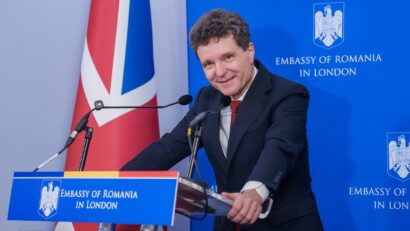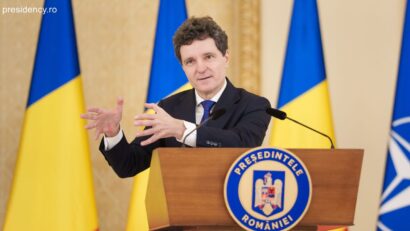Report on renewable energy in the EU
The EU has managed to address critical risks to the security of its energy supply, a European Commission report shows.

Mihai Pelin, 12.09.2024, 13:50
The European Commission has published a report on the energy situation in the EU. A first conclusion is the fact that the EU has managed to massively disconnect itself from the Russian gas supply, and community consumption has dropped significantly. The EU’s energy production is currently led by renewables, which supplied half of the electricity in the first part of the year. Wind energy alone has surpassed gas-based energy production, and nuclear energy, considered clean energy, is in first place. Primary energy consumption also decreased by 4.1%, thanks to efficiency measures. A decrease in gas consumption was also recorded, also due to efficiency measures. Thus, the European average shows a decrease of 18% compared to 2021. Also, in the field of gas, the EU managed to reduce dependence on Russia from 45% to 18% and now has new sources of supply from other regions.
At the same time, it already reached its winter gas storage target of 90% in August, well ahead of the November 1st deadline. However, energy and gas prices are a problem. Although stable and reduced way below the peak values reported during the crisis, they remain high for the European industry, an industry that competes with that of the United States and China, where prices are sometimes three times lower. The European Commissioner Kadri Simson says that prices will be lower after the implementation of the energy market reform, which will reduce the input of expensive fossil sources. As to the environment, the report shows encouraging signs. Between 1992-2022, the European Union’s greenhouse gas emissions fell by 32.5%, while the economy grew by around 67%.
According to the document, Romania has an energy mix, and this includes all types of energy, 71% based on fossil fuel, so it is in a worse situation than the European average, of 69%. On the other hand, however, the electricity mix is better than that of the EU – 44% renewable as compared to the EU average of under 40%. As an overview, the report concludes that Romania has a limited production capacity of clean technologies. Moreover, public investments in research and development were halved between 2015 and 2022. A strong point is the reduced dependence on imported gas, given that Romania is the second European producer. Another strength is the fact that in the last 2 years it has managed to reduce gas consumption above the European average without affecting industrial activity. A third strong point is the gas storage capacity for winter, and Romania’s gas storage facilities are currently full. However, energy poverty remains one of the unsolved problems. 13.6% of Romania’s population had problems paying the bill, and 12.5% could not afford to heat the house properly. The EC reminds member states to submit the new energy and environment plans. Only 11 states have sent the documents, and Romania is not among them. (LS)






























